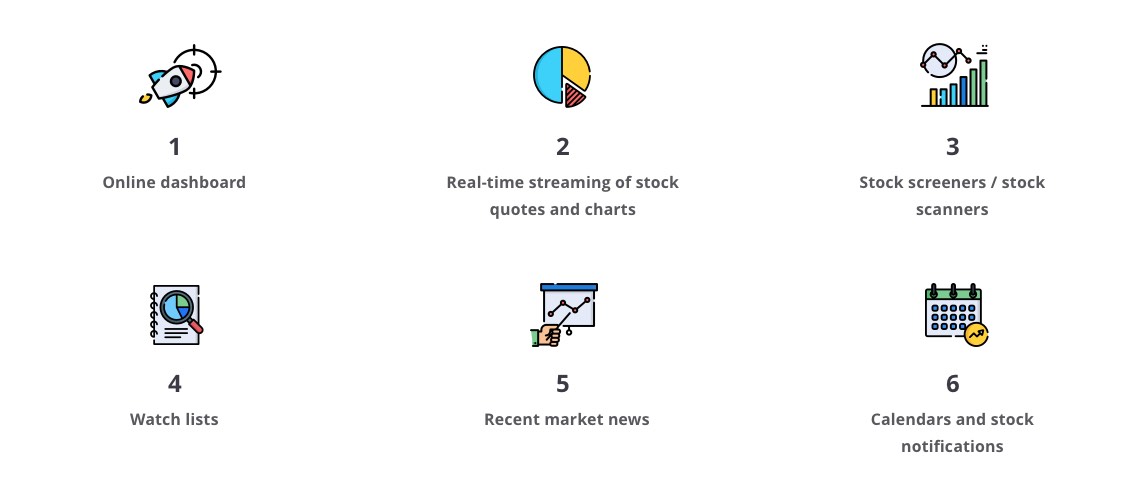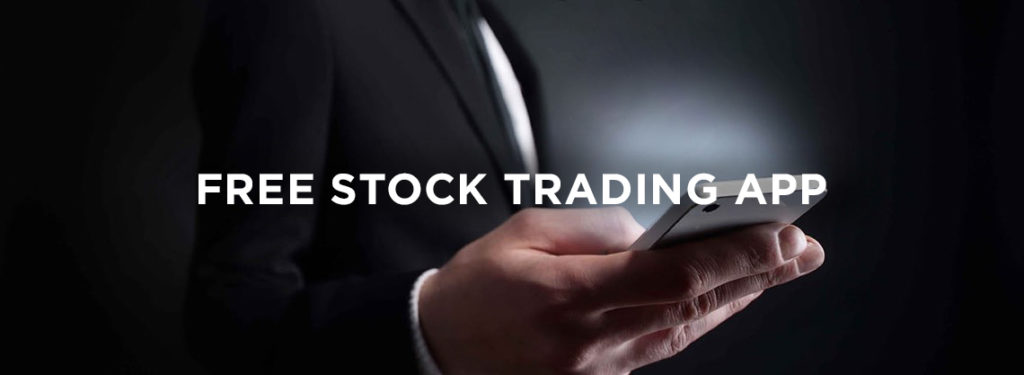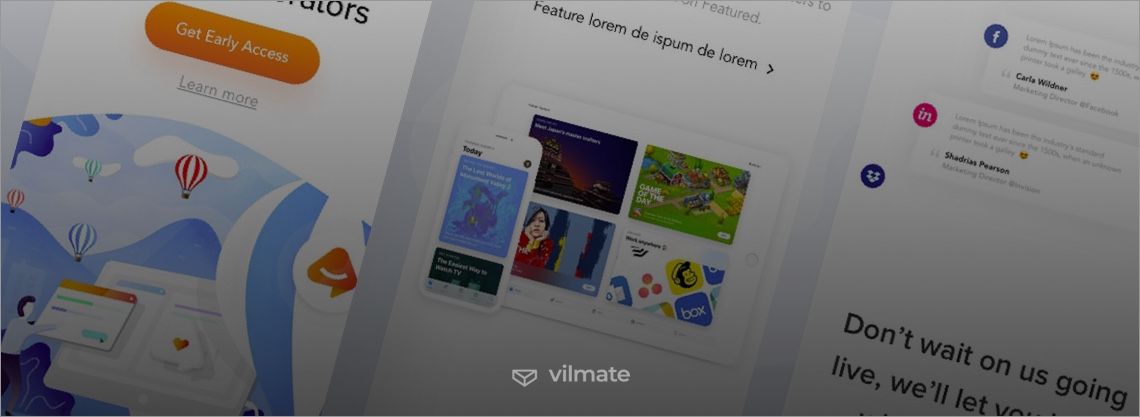Investing is, in itself, risky and sometimes results in heavy losses, but a stock trade app like E-Trade or Robinhood gives one an opportunity to save on extra fees and enjoy the benefits of numerous investment tools. We owe this improvement, in the first place, to technology innovation, new trends, and opportunities that are not only driving advancements but also causing the growth of competition in many industries, financial technology (fintech) inclusively. If you choose to build a trading platform, you should know who you are going to compete with and pay attention to what lies behind their success.
What is FinTech?
If you have ever paid for some goods or services with your phone, transferred money using an app (i.e. trading software), tagged your bank statements online (be it bank transfers; client, supplier, salary, or tax payments), then you are already part of this multi-billion industry.
Broadly speaking, the term fintech encompasses a huge range of products, technologies, and business models that drive changes in the financial services industry. Although this term is being heard from everywhere now, it is by no means a buzzword. Instead, it is a big business opportunity emerging from the disrupted traditional financial markets and encouraging businesses to develop trading platforms.
Fintech is not just another futuristic fantasy, too. Cashless payments, crowdfunding platforms, robo-advisors, and virtual currencies are some of the real-life examples that support the idea. Advances in technology like these are the forms of innovative technologies that are revolutionizing the FinTech sector now.
All these original products, technologies, and models can be presented to customers in the most convenient way — in the form of iOS and Android applications right on their mobile devices.
What is a trading app?
Like all other apps supported by mobile devices, trading apps are intended to increase user’s efficiency and effectiveness whenever they complete a task in their private and public lives. Apps for trading stocks particularly are created to support users in search of robust trading solutions. The sought-for product must encourage them to follow their personal investment strategy and suit their budget. Luckily, fintech is here to help you bring the whole new trading experiences and capabilities to smartphone owners.
Sometimes, commissions and multiple additional trading charges may cost regular traders a pretty penny. Yet, no one wants to pay extra. Instead, people want a free stock trading app that would generate healthy returns. So, investment apps that are designed with the end-user in mind should help reduce additional costs or even eliminate them completely.
Fintech business models are meant to work, in the first place, for people and bring about the prosperity of the full-service consumer finance firms. Trading platforms also possess the mobility that allows traders to continuously monitor the stock market. Thus, transactions can be conducted at any time, which makes the number of stock trading apps at the market grow.

How investing and stock trading apps work
In principle, fintech is all about proper ways and patterns of money handling: storing, borrowing, lending, investing, spending, storing, or even protecting it. The technology is meant to give assistance to people in managing their financial operations more efficiently. In other words, the form in which fintech will appear on your device depends entirely on which segment of the industry an application belongs to.
These segments are the following:
- financing & crowdfunding
- wealth & asset management
- payments
- capital markets
- insurance services
This is only a brief list that implicates the presence of subsegments we are leaving out for now. What really matters here is that investing and stock market apps are meant to improve and automate the delivery of financial services in the segment of financing & crowdfunding. In fact, investing and stock trading apps are a full-function tool that gives permanent access to the market. Consequently, a user can monitor market activity changes, get real-time stock quotes, and more.
According to Investopedia and Forbes, to name a few, free stock trading apps are being built and run for Millennials to start investing. This assumption is quite reasonable.
-
Firstly, they are more likely to be aware of innovative technologies than those who represent previous generations. It means that Millennials but not Gen Xers or Baby Boomers hold a prominent position on the market since, stereotypically, the latter are less interested in digging deeper into the peculiarities of new opportunities emerging in the IT world.
-
Secondly, fintech just does not address Gen Xers and Baby Boomers’ problems. Millennials are used to relying on their handheld devices when completing everyday tasks. To put it another way, fintech users opt for digital channels when it comes to managing their lives.
-
Yet, the other side of the coin is that by developing stock trading apps, companies draw young people’s attention to financing. While traditional brokerages keep taking fees on a regular basis from investors and traders, applications let customers drive trades and make investments without charging them for each transaction. How exactly stock market apps are monetized, we will discuss later in this article.
The best stock trading apps
Any investment is a threat to your wealth so it's important to be prepared. If you're looking to trade options or a pre-trade stock, you can't choose just any app. There are so many great brokerage applications available today but you have to choose a stock trading app that would best suit your needs and interests.
With the plethora of apps available, it's hard to know where to begin. So, for starters, consider these top 3 best stock trading apps, along with their core features and common fees:
Robinhood
- No account minimus
- Cryptocurrencies trading
- Margin accounts
- Streamlined interface
- Support for only individual taxable accounts
Fees: $0 per trade, $2,000 for Robinhood Gold margin account
E-Trade
- No commission for stock/ETF trades
- The performance risk tools
- Retirement planning guidance
- Best for trading more than just standard asset classes
- E-Trade Pro’s premium tools
Fees: $0 per trade, $0.50-$0.65 per contract for options trading
TD Ameritrade
- Large investment selection
- Expensive broker-assisted trades
- The Trade Finder tool
- Extensive research capabilities
- Margin trading
Fees: $0 per trade, $0.65 per contract
Stock market apps monetization
In early 2018, Robinhood had over 4 mln accounts and E-Trade had 3.7 accounts. Throughout their presence, they have been trying to prove that collecting interest on customer deposits and securities they hold is not the only way to make money from an application.
An online trading app can also be monetized through premium features. Chances are some of those millions of users are ready to pay extra to go beyond what free stock trading software offers. These features improve the user experience for online traders and help applications make revenue. This monetization model can be illustrated through the example of Robinhood Gold.
Robinhood Gold is an advanced way of interacting with the stock market. It unlocks wider possibilities by allowing customers who have a minimum balance of $2,000 to trade on margin, access extended-hours trading and more.
Technologies and tools to make a successful trading platform
The development of a trading app involves a number of stages including:
- deep market research
- development of a marketing strategy
- designing a stock trading application architecture
- choosing a platform
- testing and quality assurance
The successful completion of all these stages and delivery of a flawless app is possible only if a development team uses a comprehensive set of tools.
Long-term fruitful investing needs reliable trading software. Unfortunately, trading applications can sometimes fail to handle loads of large-scale automated operations. For this reason, building an automated rules-based mobile trading app using multi-language third-party APIs will be a good idea. Choose a programming language or protocol from the wide variety available and applicable and go ahead!
These include, for example, Java and .NET (C#). The choice of a language from those used in writing code for APIs will depend on what you prioritize. When building a stock trading application, software engineers may also consider .NET Core Web API as a way to do the server-side setup (web apps) and Angular / React / Vue.js as JavaScript frameworks and libraries along with the corresponding tech stacks for building Android and iOS apps.
Features of the most famous stock market apps
Although it is free for users to become investors and start selling stocks via apps now, to yield better overall profits, a trading platform like E-Trade or Robinhood still has to add premium features and take other adequate measures. Let’s take a closer look at the basic features E-Trade and Robinhood and other free stock trading apps possess.
-
Online dashboard. On a so-called adaptive portfolio dashboard, a user can see sortable data, which enables goal tracking for the sake of progress and user experience improvement.
-
Real-time streaming of stock quotes and charts. This is the feature that is also present on a dashboard. Besides, data there can update every second automatically in modern systems to generate the most accurate analysis, price patterns and efficient strategies.
-
Stock screeners/stock scanners. Screening has to provide valid results: the aforementioned charts and quotes derived using all kinds of fundamental, technical, and descriptive metrics to take advantage of when stock-picking.
-
Watch lists. They normally allow keeping an eye on stocks to plan further investments and show users price, volume, bid price, and percentage changes. Watch lists are an essential ingredient for conducting substantial stock research.
-
Recent market news. It is crucial to make rather informed financing decisions. Relevant and timely news customized to the user’s watchlist available right on their stock trading app is exactly what helps with that.
-
Calendars and stock notifications. Real-time tracking and 24/7 availability are what users expect from stock trading apps. Naturally, it is important to stay up to date with a variety of alerts.

How much does it cost to develop a stock trading app?
Any growing industry, fintech is not an exception, is not without risks, which makes calculating the price of stock trading application development a trouble spot. First, one has to decide on the operating system he/she wants to build a trading system for, what features the end product will offer to its users and whether the prototype is needed. From which country the client hires software engineers for the project influences the price as heavily as the type of cooperation between the parties.
All of these points are the impact factors. However, supposing that one needs an application with the basic set of features, the development process itself, quality testing and assurance, and app design creation might take around 1000 hours. If multiplied by the average hourly rate of $35, the total cost makes $35 000.
Still, coming up with the precise sum is nearly impossible and estimates are rather made to illustrate what the minimum price for the given scope of work is.
| Stages of development | Cost |
| Native Development | $13,500 |
| UX/UI Design | $5,400 |
| Backend Development | $7,000 |
| Testing and Quality Assurance | $8,900 |
| Project Management (10-15% of the total budget) | $2,200 |
| Total | $35,000 |
Conclusion
Now, when millennials are the drivers of a new consumer era, stock trading apps are coming to the fore. Today, it is free stock trade apps that mediate our financial investment decisions. Robinhood and E-Trade are just two examples of the free stock trading applications present on the market. Yet, the success these particular apps enjoy is undeniable. Nevertheless, with the answers to the key questions about creating an app for handling stocks, you stand a good chance of contributing to investment promotion among the young. Following the above recommendations, you can try and build a trading platform of your own. Be reasonable, do your best to get informed, let others’ successes inspire you and rest assured that the development of a trading platform will be a rewarding experience!

© 2019, Vilmate LLC




